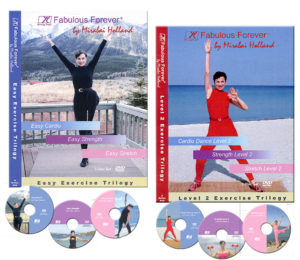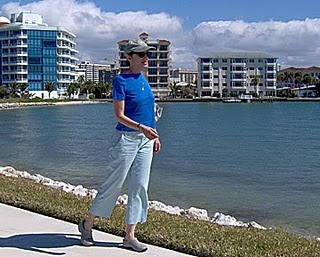 Many of today’s fitness programs are all about the quick sell and even quicker results. Many are based on dangerous fitness myths.
Many of today’s fitness programs are all about the quick sell and even quicker results. Many are based on dangerous fitness myths.
Here are 5 fitness myths to steer away from:
Myth #1: Pain Equals Gain
It is a popular misconception that only when you feel the pain are you gaining anything from your workout.
“The “no pain, no gain” mentality contributes to more injuries and more burnout than any other fitness factor, especially among my age group (baby boomers). It is wiser to exercise sustainably over a longer term, than to push yourself to the breaking point.
Myth #2: A Taskmaster Equals the Best Teacher
Reality Exercise Shows that have recently become popular portray drill-sergeant-style trainers as being the most effective fitness mentors.
While leveraging fear and using intimidation techniques may mean instant short-term fitness results, they’re sending the wrong message about how to get and stay fit for a lifetime. Attainable short-term goals and positive reinforcement are more likely to create good fitness habits that are sustainable for life
Myth #3: Pumping up the Volume Equals Pumping up Your Physique
It seems some fitness instructors think screaming louder and blasting the bass is motivational. It’s time to think again.
While high-decibel workouts might be temporarily motivational, over time these techniques become draining and stressful leading to faster fitness burnout. Look instead for uplifting music and gentle coaching in your workouts.
Myth #4: Fitness Equals a Fight Against Your Body
Sales pitches that encourage “shaving off the pounds” and busting your abs or your butt have solidified the image of fitness as a battle against your body.
Fighting is not a sustainable activity or philosophy. Instead, think of partnering with your body. Meet it where it is at right now and provide the environment and tools to reveal your body’s best potential. When you take this approach you are setting yourself up for success every step of the way.
Myth #5: Force Equals Fit
Today’s popular exercise routines promote pounding your body into shape. But ancient fitness modalities, such as Yoga and Tai Chi had it right.
Fitness is not about pumping the most iron or performing the most reps, it is about teaching your body how to move efficiently, using all of your muscles groups, and sustaining these movements over time. Exercise including strength training should be approached as a gradual lifetime process. This way, exercise becomes a pleasure not a chore.
Follow Mirabai Holland, Certified Health Coach & Certified Exercise Physiologist:
 NEW ON-DEMANWORKOUT CLUB YOU MIRABAI’S EXERCISE VIDEOS TWO MEMBERSHIP LEVELS CLICK HERE
NEW ON-DEMANWORKOUT CLUB YOU MIRABAI’S EXERCISE VIDEOS TWO MEMBERSHIP LEVELS CLICK HERE





 For a Gift that keeps on giving for a lifetime, check out my holiday 30% discount on all myDVDs. Put TAKECHARGE AT CHECKOUT GOOD UNTIL 12/30/18
For a Gift that keeps on giving for a lifetime, check out my holiday 30% discount on all myDVDs. Put TAKECHARGE AT CHECKOUT GOOD UNTIL 12/30/18





